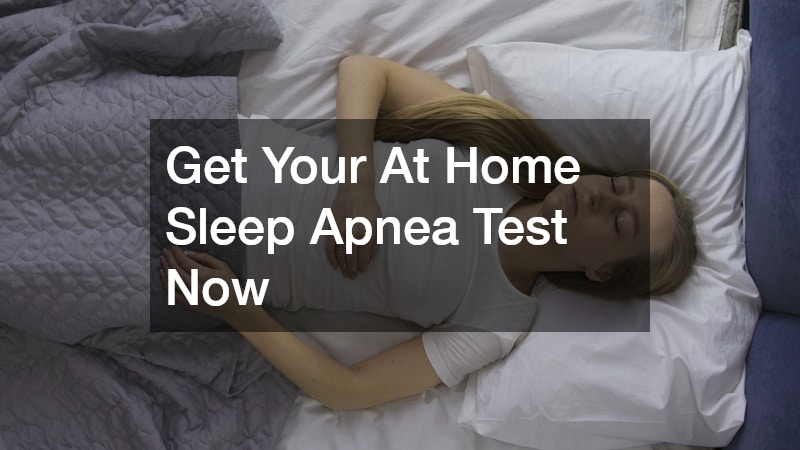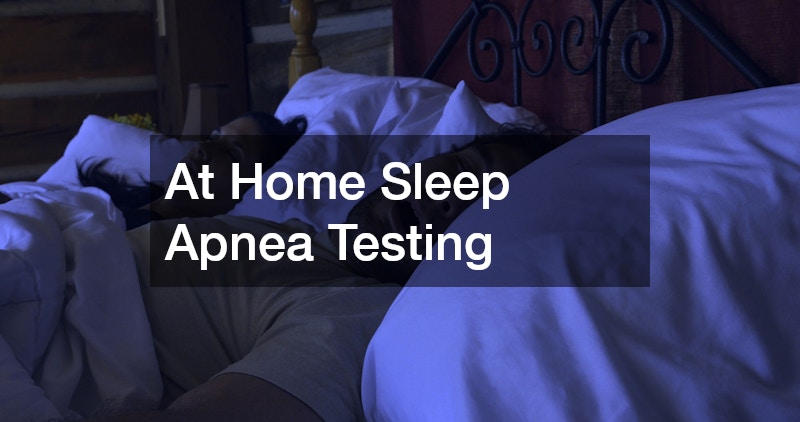
Sleep apnea is a common sleep disorder affecting millions of people worldwide. Left untreated, it can lead to serious health complications, including high blood pressure, heart disease, and daytime fatigue. Traditionally, diagnosing sleep apnea required an overnight stay at a sleep lab, but advances in technology have made at home sleep apnea testing a convenient and increasingly popular alternative. This article provides a comprehensive guide to understanding, preparing for, and interpreting results from home sleep apnea tests.
What is At Home Sleep Apnea Testing?
At home sleep apnea testing allows individuals to assess their sleep patterns in the comfort of their own bedroom. Unlike traditional polysomnography conducted in a lab, these tests use portable devices to monitor breathing, oxygen levels, and other relevant metrics while you sleep.
Difference Between Home and Lab Tests
Lab-based sleep studies measure a broader range of parameters, including brain waves, muscle activity, and heart rate, providing a comprehensive analysis of sleep quality. Home tests are simpler, primarily focusing on airflow, oxygen saturation, and respiratory effort. While less comprehensive, home tests are convenient, cost-effective, and often sufficient for diagnosing moderate to severe obstructive sleep apnea.
Components of a Home Test Kit
Typical at home sleep apnea testing kits include:
-
A small device that records breathing patterns and oxygen levels
-
Nasal cannulas or sensors to monitor airflow
-
Pulse oximeters for measuring blood oxygen
-
Instructions and accessories for easy setup
How to Prepare for the Test
Proper preparation ensures accurate results. Recommendations include:
-
Avoiding caffeine or alcohol before bedtime
-
Following a normal sleep routine
-
Ensuring all sensors are securely attached and functional
-
Keeping a log of sleep times, awakenings, and symptoms
Understanding Test Results
Home sleep tests measure metrics such as:
-
Apnea-Hypopnea Index (AHI): The number of breathing interruptions per hour
-
Oxygen desaturation: Drops in blood oxygen levels during sleep
-
Sleep duration and quality indicators
Results are interpreted by a healthcare provider, who determines the severity of sleep apnea and recommends further treatment if necessary.
How Accurate are At Home Sleep Apnea Tests?
Effectiveness Compared to In-Lab Tests
Studies have shown that home tests can reliably detect moderate to severe obstructive sleep apnea. For mild cases or complex sleep disorders, lab-based polysomnography may still be necessary.
Limitations of At Home Testing
-
Cannot capture brain activity or detailed sleep stages
-
Less accurate in patients with complex health conditions
-
Requires proper adherence to instructions for reliable data
Validation Studies and Findings
Clinical research indicates that at home sleep apnea testing has high sensitivity and specificity in appropriate patient populations, making it a credible initial diagnostic tool.
Common Misinterpretations of Results
Home tests may occasionally overestimate or underestimate apnea severity if sensors are misapplied or data is incomplete.
Guidance from Sleep Specialists
Healthcare providers emphasize that home testing should be followed by a professional review, particularly if results are borderline or symptoms persist.
Who Should Use At Home Sleep Apnea Tests?
Ideal Candidates for Home Testing
-
Adults with symptoms of obstructive sleep apnea, such as loud snoring, daytime sleepiness, or observed pauses in breathing
-
Individuals seeking a convenient, cost-effective preliminary evaluation
Contraindications for Use
Patients with significant medical conditions, complex sleep disorders, or those needing detailed monitoring should undergo in-lab testing.
Age and Health Considerations
Most adults are suitable for home testing, but children or patients with serious cardiovascular or respiratory conditions may require more controlled environments.
Guidelines from Health Organizations
Authorities like the American Academy of Sleep Medicine support home testing for appropriately selected adults, provided results are interpreted by qualified clinicians.
Consultation with Healthcare Providers
Discussing symptoms and testing options with a healthcare professional ensures accurate diagnosis and safe follow-up care.
What are the Costs Associated with At Home Sleep Apnea Testing?
Price Comparison with In-Lab Testing
Home tests are generally less expensive than lab-based polysomnography, often costing a few hundred dollars versus over a thousand in a sleep lab.
Insurance Coverage and Reimbursement
Many insurance plans cover home sleep apnea testing if deemed medically necessary. Verification with your provider is recommended.
Cost of Devices and Equipment
Some patients rent testing devices, while others may purchase kits. The cost varies depending on features and provider.
Financial Assistance and Discounts
Some sleep clinics offer financial aid or discounts to make home testing more accessible.
Long-term Cost Implications
Early detection through home testing can prevent expensive complications from untreated sleep apnea, making it a potentially cost-saving choice.
How to Get Started with At Home Sleep Apnea Testing
Identifying Symptoms and the Need for Testing
Common signs of sleep apnea include loud snoring, frequent awakenings, gasping during sleep, and persistent daytime fatigue.
Choosing the Right Testing Kit
Look for FDA-approved devices with clear instructions and remote support options if needed.
Ordering and Receiving the Test
Many clinics and online providers allow patients to order kits directly, often delivered within a few days.
Conducting the Test
Follow all instructions carefully, ensure sensors are secure, and maintain your usual sleep routine for accurate results.
Follow-up and Next Steps
After completing the test, return the device as instructed. A healthcare provider will review the data and discuss potential treatments, which may include lifestyle changes, CPAP therapy, or further diagnostic tests.
At home sleep apnea testing offers a convenient, accessible, and effective way to screen for sleep apnea without the need for an overnight stay in a sleep lab. While not suitable for every patient, it provides a valuable initial step for many adults experiencing symptoms. Consulting with a healthcare provider ensures that the results are interpreted correctly and that appropriate treatment follows. With early diagnosis, patients can take control of their sleep health, improve overall wellness, and reduce the risks associated with untreated sleep apnea.


